Dive into the complex world of shoulder muscles where strength meets flexibility. The shoulder, a hub of activity in our body, relies heavily on three major muscle groups: the rotator cuff, deltoid, and trapezius. These muscles work in harmony to perform a range of movements from lifting to throwing. Let’s explore each muscle’s role, how they interact, and why they are crucial for both daily activities and athletic endeavors.
The Rotator Cuff: Four Muscles, One Essential Group
Contrary to what some might think, the rotator cuff isn’t just one muscle; it’s actually comprised of four distinct muscles that encircle the shoulder joint. These include the supraspinatus, infraspinatus, teres minor, and subscapularis. Together, they provide stability to the shoulder and enable it to execute a wide range of rotational movements. Have you ever noticed how your arm can move in almost any direction? That’s the work of the rotator cuff at play!
The Deltoid: Power and Precision
Sitting like a cap on the top of your shoulder, the deltoid muscle is impossible to miss. It’s divided into three sections: anterior, middle, and posterior fibers. This structure allows the deltoid to aid in a variety of arm movements such as lifting and reaching. Whether you’re throwing a ball or reaching for a high shelf, your deltoid is at the forefront.
The Trapezius: More Than Just a Muscle
Stretching from your neck to the middle of your back, the trapezius is often mistaken for just a shoulder muscle. It actually plays a key role in moving the shoulder blade (scapula) and supports the arm. The trapezius helps you perform tasks that involve raising your arms and shrugging your shoulders.
How These Muscles Work Together
Imagine the symphony of movements when these muscles coordinate. The rotator cuff stabilizes, the deltoid moves, and the trapezius adjusts the position of the shoulder blade, creating a full range of motion. This collaboration is essential for both simple and complex tasks.
Maintaining Shoulder Health
Keeping these muscles strong and flexible is vital. Regular exercise, proper stretching, good nutrition and avoiding overuse can help maintain shoulder health. Neglecting shoulder health can lead to pain or injury, limiting your ability to perform everyday tasks.
Frequently Asked Questions (FAQs)
What is the most common injury to the rotator cuff?
The most common injury is a tear, which can occur from overuse or acute trauma.
Can exercises strengthen my deltoid?
Absolutely! Exercises like shoulder presses and lateral raises are great for strengthening the deltoid.
How can I prevent trapezius strain?
Regular stretching and maintaining good posture can help prevent strain.
Are there any signs of shoulder muscle fatigue I should watch for?
Yes, pain, weakness and decreased range of motion can be signs of fatigue. Rest and consult a professional if symptoms persist.
How often should I exercise my shoulder muscles?
Aim for 2-3 times a week, focusing on both strength and flexibility.
Understanding the roles and interactions of the rotator cuff, deltoid, and trapezius muscles not only helps in performing daily activities but also in maintaining overall shoulder health. Remember, a little care goes a long way in keeping these muscles strong and functional. Whether you’re an athlete or someone who enjoys a casual stroll, shoulder care is vital for a pain-free lifestyle.
See also: Understanding the Shoulder Joint and Common Anatomical Variations in the Shoulder
